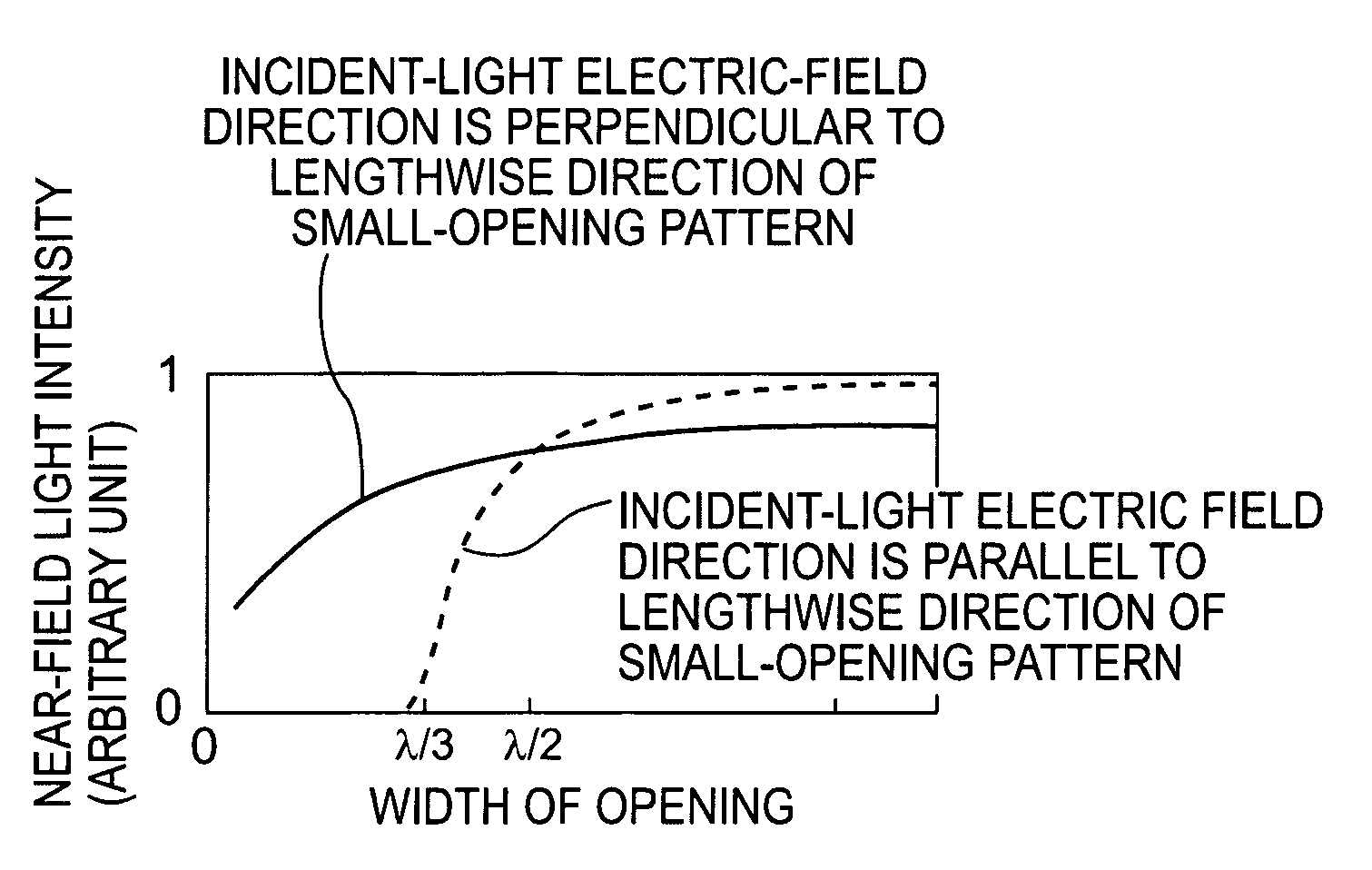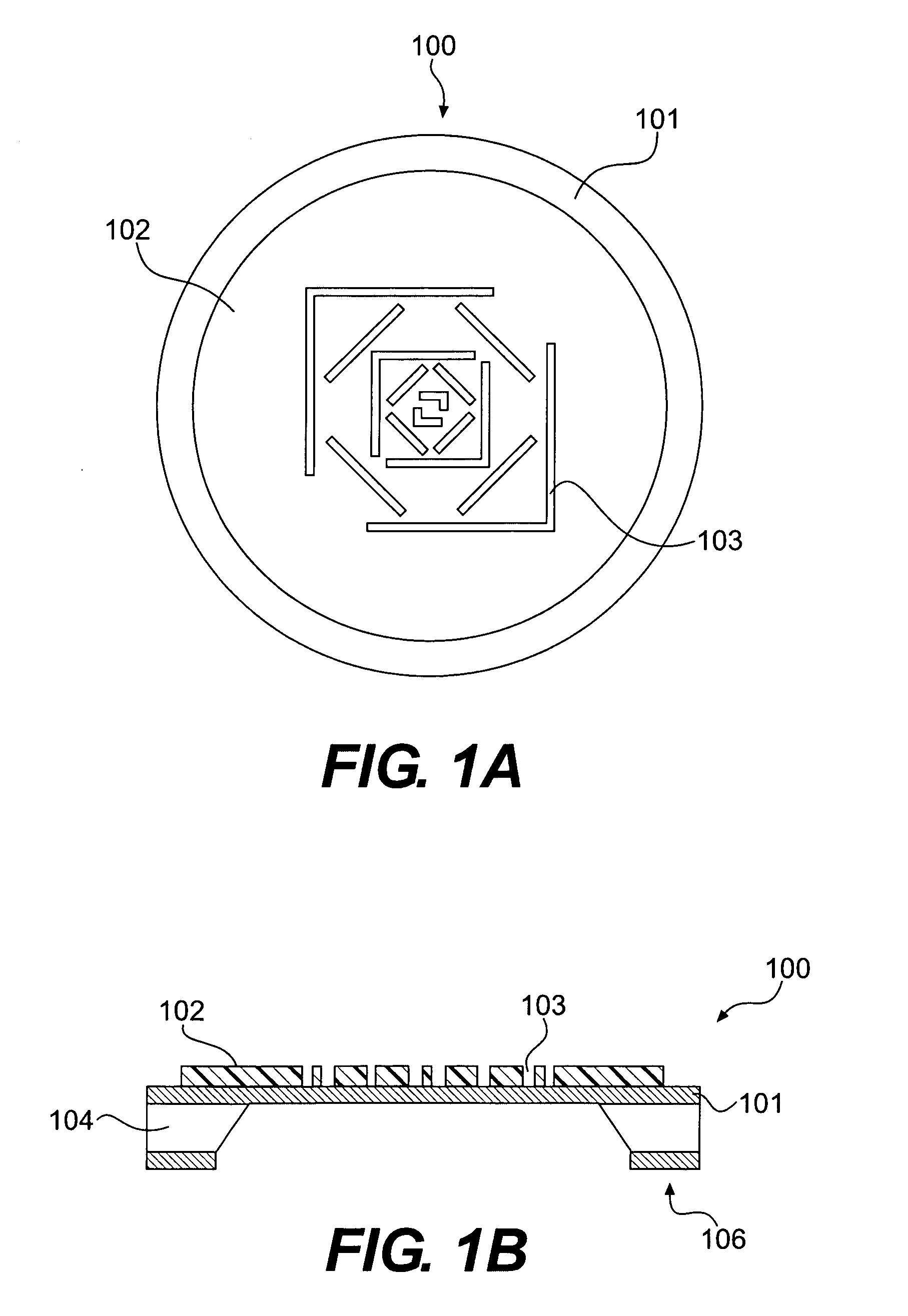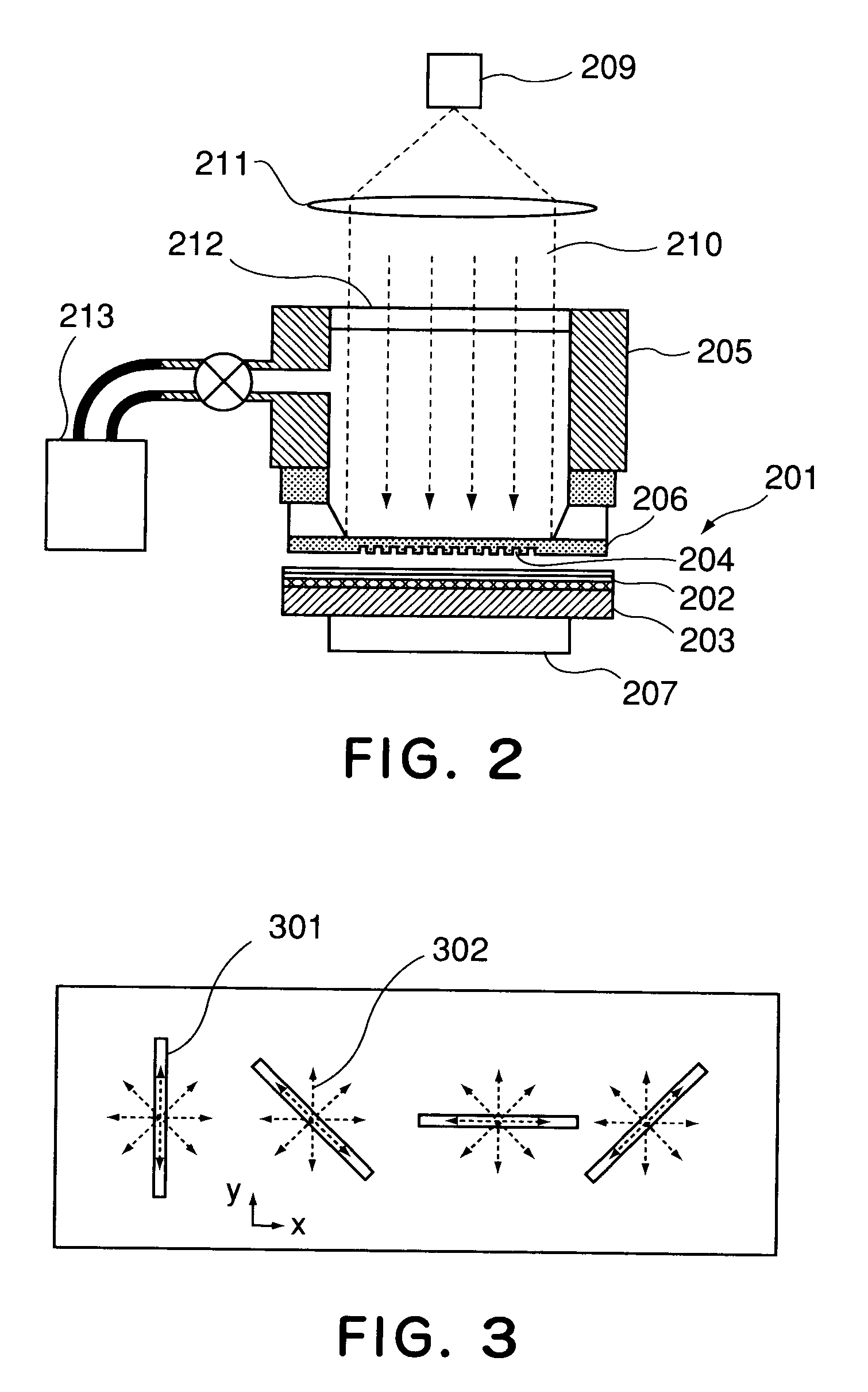Near-field exposure method
a near-field and exposure method technology, applied in the field of exposure methods, can solve the problems of decreasing proportional constants, difficult to improve resolution, and difficult for a projection exposure apparatus to form a pattern not greater than 0.10 m
- Summary
- Abstract
- Description
- Claims
- Application Information
AI Technical Summary
Benefits of technology
Problems solved by technology
Method used
Image
Examples
Embodiment Construction
[0028]Preferred embodiments of the present invention will now be described with reference to the attached drawings.
[0029]An exposure method, an exposure mask and an exposure apparatus to be provided in accordance with the present invention are such as described above.
[0030]Referring now to the drawings, an exemplary exposure method 1 according to the present invention will be explained first. Here, embodied forms of the present invention will be described in detail with reference to FIGS. 1A, 1B and 2.
[0031]FIGS. 1A and 1B show the structure of an exposure mask according to the present invention. FIG. 2 is a view which illustrates an example of the structure of an exposure apparatus, using such an exposure mask.
[0032]Referring to FIGS. 1A and 1B, an exposure mask 100 according to the present invention will be explained. FIGS. 1A and 1B illustrate an exposure mask to be used in the exposure apparatus shown in FIG. 2. FIG. 1A illustrates the front surface side, and FIG. 1B is a sectio...
PUM
| Property | Measurement | Unit |
|---|---|---|
| wavelength | aaaaa | aaaaa |
| wavelength | aaaaa | aaaaa |
| wavelengths | aaaaa | aaaaa |
Abstract
Description
Claims
Application Information
 Login to View More
Login to View More - R&D
- Intellectual Property
- Life Sciences
- Materials
- Tech Scout
- Unparalleled Data Quality
- Higher Quality Content
- 60% Fewer Hallucinations
Browse by: Latest US Patents, China's latest patents, Technical Efficacy Thesaurus, Application Domain, Technology Topic, Popular Technical Reports.
© 2025 PatSnap. All rights reserved.Legal|Privacy policy|Modern Slavery Act Transparency Statement|Sitemap|About US| Contact US: help@patsnap.com



